In the freshwater aquarium hobby, a nano tank is usually defined as a glass tank undercutting the volume of a standard aquarium (60 x 30 x 30 cm) of 54 liters. Surprisingly enough, there is no German law for keeping ornamental fish, but there is an expert report called "Minimum requirements for the keeping of ornamental fish", which was compiled by the "Working group fishkeeping in the BNA" (Federal Association for nature, animal and species protection) in cooperation with various associations. These experts recommend aquariums starting at 54 liters upwards for keeping ornamental fish permanently, with some exceptions. In other countries, such as Austria, this size is even set by law as absolute minimum for fishkeeping. There are no such rules and guidelines for shrimp, for example.
Amongst the most popular nano aquariums we have the glass Dennerle Nano Cubes with their square footprint. They are pretty popular among shrimpkeepers. However, more panoramic glass tanks with a rectangular footprint are better suitable for aquascaping, e. g. the Mini M by ADA or the Scaper´s Tanks from Dennerle. Their rather small dimensions make them less suitable for keeping fish (with the exception of Betta splendens), however, they are perfect for freshwater invertebrates like snails and shrimp. Especially in recent years, there’s been a veritable hype surrounding the keeping of dwarf shrimp like Bee Shrimp or Neocaridina in a so-called nano aquarium.
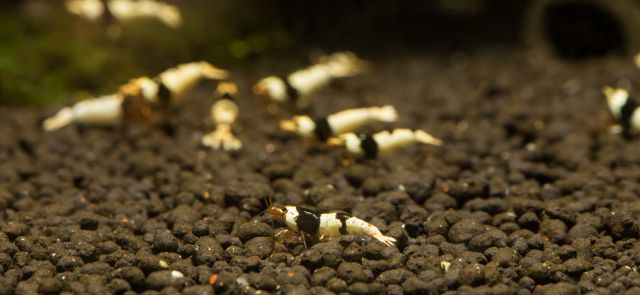
These small tanks are equipped with internal or external filters especially developed for their size, and, thanks to their low weight and small size, nano aquariums can be put in various places in your living space, like a desk, a chest of drawers or on top of your kitchenette. Special aquarium furniture can be used for a nano aquarium, but it's not really necessary.
By the way, the term Pico is used for an extremely small nano-aquarium with a capacity of less than 10 liters. Due to their small size, pico tanks usually run without technical equipment like a filter at all, and without any animals. They are kept as planted tanks only.
The myth of the unstable biological system in a small aquarium
Many older aquarium hobbyists are convinced that the biological system is more stable in larger tanks. Quite frequently, beginners are therefore given the advice to start their hobby with a bigger tank. However, this idea is really obsolete today: The ecosystem may run well or poor in a large tank, too, since this has not much to do with the actual size of the aquarium. The technical equipment for aquariums has been scaled down so much in recent years that it can easily be used in a small nano aquarium. Special equipment like lighting systems, filters, heaters and other devices for small aquariums has been available for years.
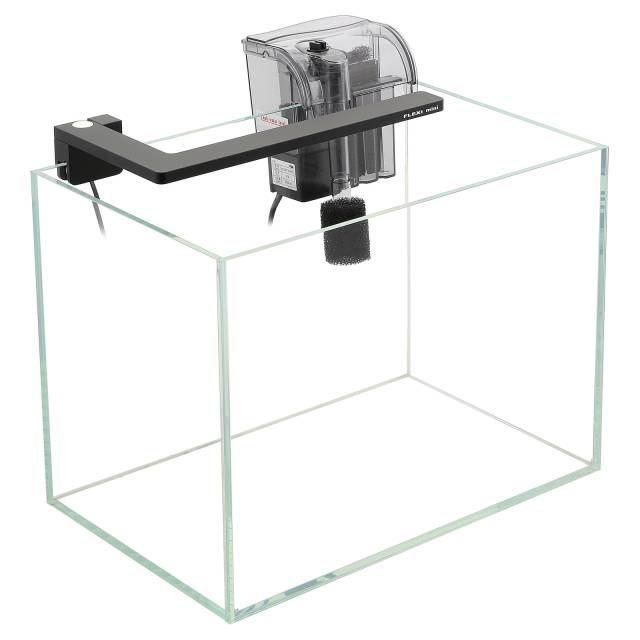
Considering all this, nano aquaria are very much recommendable for beginning aquarium keepers. They even have very characteristic advantages: Thanks to their small size, the running costs for water and electricity are lower, as well as the initial costs for decoration, the substrate and the aquatic plants. Fertilizer, food and products for maintenance are also available in smaller containers nowadays, which are much better for a nano aquarium than the bulk packs from the days of old. Thanks to their compact dimensions, nano aquariums can be integrated almost anywhere in the living space, even with very limited room, and they do not look as bulky and massive as larger glass tanks that require hulking aquarium furniture.

Aquatic plants for a nano aquarium
A nano aquarium is quite suitable to serve as a planted aquarium or aquascape. Especially, thanks to the Nature Aquarium trend, smaller ground-covering plants and mosses have become very popular. By now, they have become part of the standard range of any well-stocked specialist aquarium shop. Here’s a little overview of aquatic plants that fit a nano aquarium well:
Christmas Moss
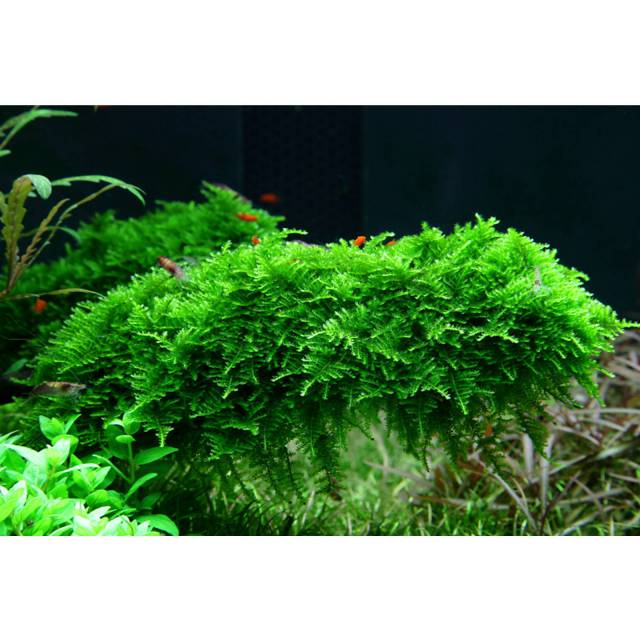
This moss has lengthy fronds that are shaped like little Christmas trees. It will attach itself to surfaces such as wood and stone. Under sufficient light, it develops a compact growth habit, sometimes with slightly drooping shoots.
Hemianthus callitrichoides "Cuba"
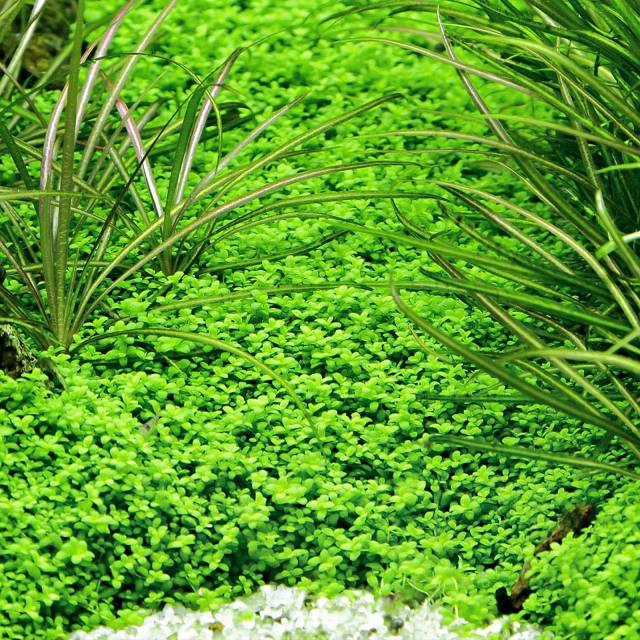
Dwarf Baby Tears is one of the smallest aquarium plants. It is often abbreviated as "HCC", which is short for its species name Hemianthus callitrichoides "Cuba". A more sophisticated plant with roundish light-green leaves, with a creeping growth habit. If sufficient light and nutrients are available, HCC will produce visible oxygen bubbles.
Riccardia sp.
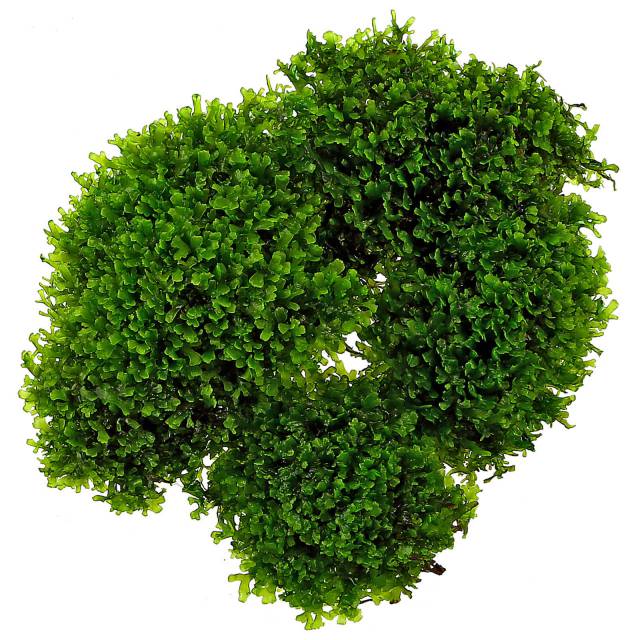
Coral moss has really tiny leaves and therefore is ideal for a nano aquarium. This special moss grows on wood or stones and forms roundish cushions. Coral moss grows slowly, but nevertheless requires a little more light and nutrients as well as good CO2 supply for healthy growth.
Fissidens fontanus
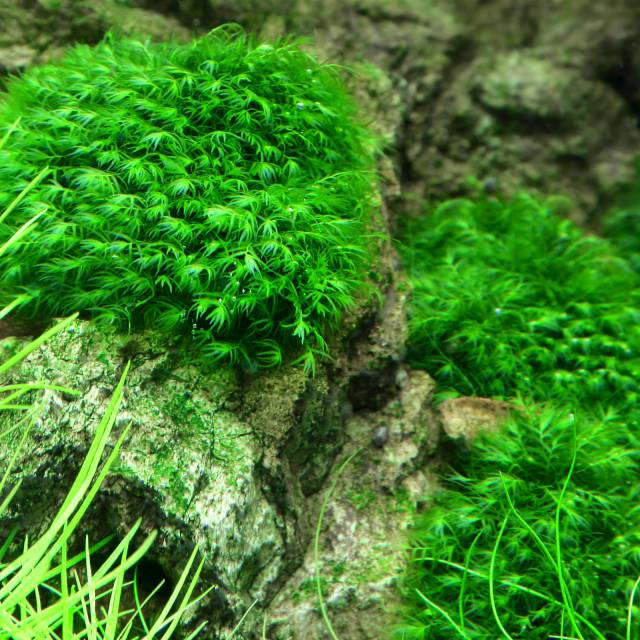
Fissidens fontanus, also called Phoenix Moss, is a uniquely beautiful moss. The delicate leaves are very small, short and shaped like feathers. This moss forms roundish cushions and can attach itself to decoration as well as the substrate. A more sophisticated moss, which needs sufficient CO2 and a good nutrient supply in order to grow well.
Eleocharis sp. 'Mini'
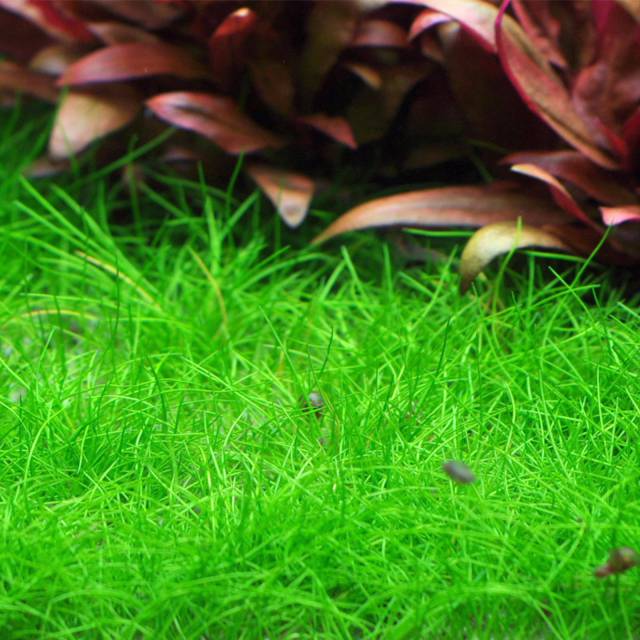
An excellent ground cover for a grass-like lawn in your nano tank. The plant propagates through runners, albeit at a rather slow speed. The thin stalks are light green. Eleocharis sp. 'Mini' has a lower growth habit than other Eleocharis species. Thus the plant is well-suited for a small aquarium.
Hemianthus glomeratus
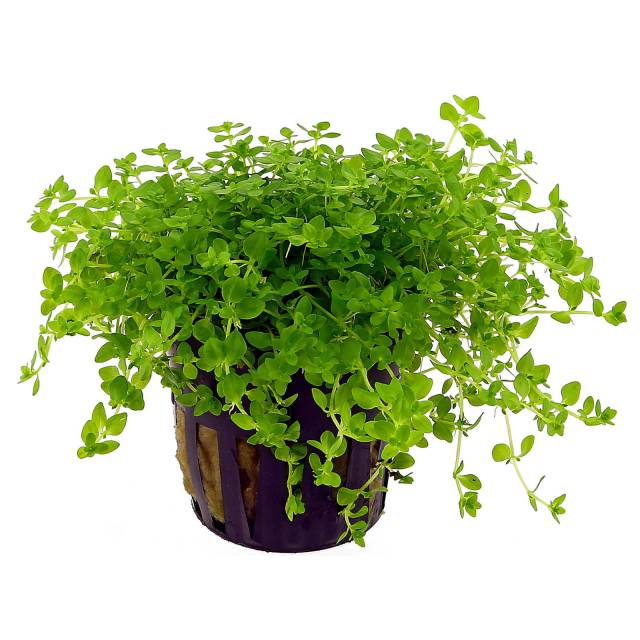
Hemianthus glomeratus as emerged potted ware.
The Manatee Mudfloweris a stem plant that is, thanks to its small leaves, well-suited for a nano aquarium. It forms dense bushes and can be used in the midground or in the background of the aquarium. A fertilizer regimen containing with micronutrients and macronutrients as well as CO2 is required for this plant to grow fast and vital.
Cryptocoryne parva
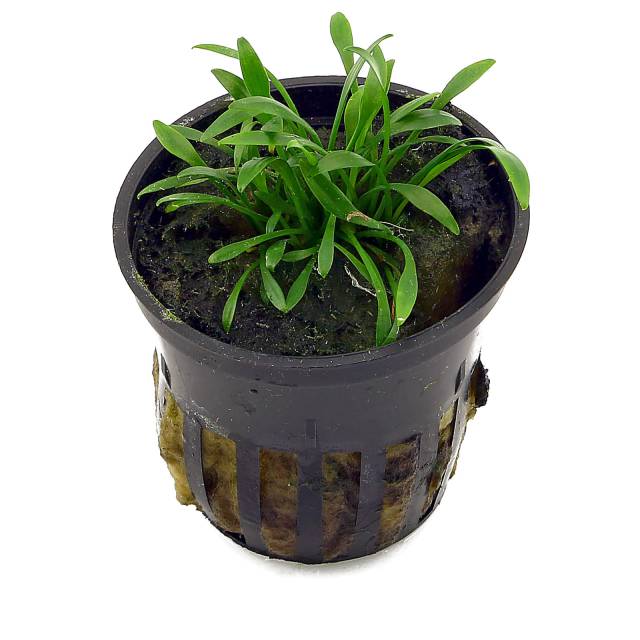
This is a very small crypt variant. The green leaves of this water trumpet are slightly lanceolate. Like almost all other crypts, this plant is rather undemanding, but sufficient light and a soil rich in nutrients will make the dwarf water trumpet grow better. Cryptocoryne parva is great for use in the midground and foreground of a nano aquarium.
Bucephalandra sp.
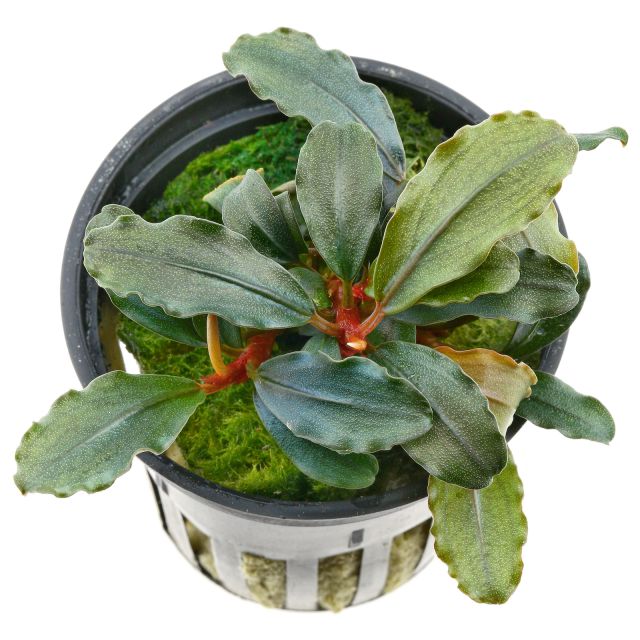
During the last couple of years, the different Bucephalandra forms have become more and more popular. These slow-growing epiphytes are fairly undemanding and small-scale. The many different leaf shapes and colors make them a popular collector's item. They can be used to add some green to stones or driftwood. A closer look at the genus Bucephalandra can be found here.